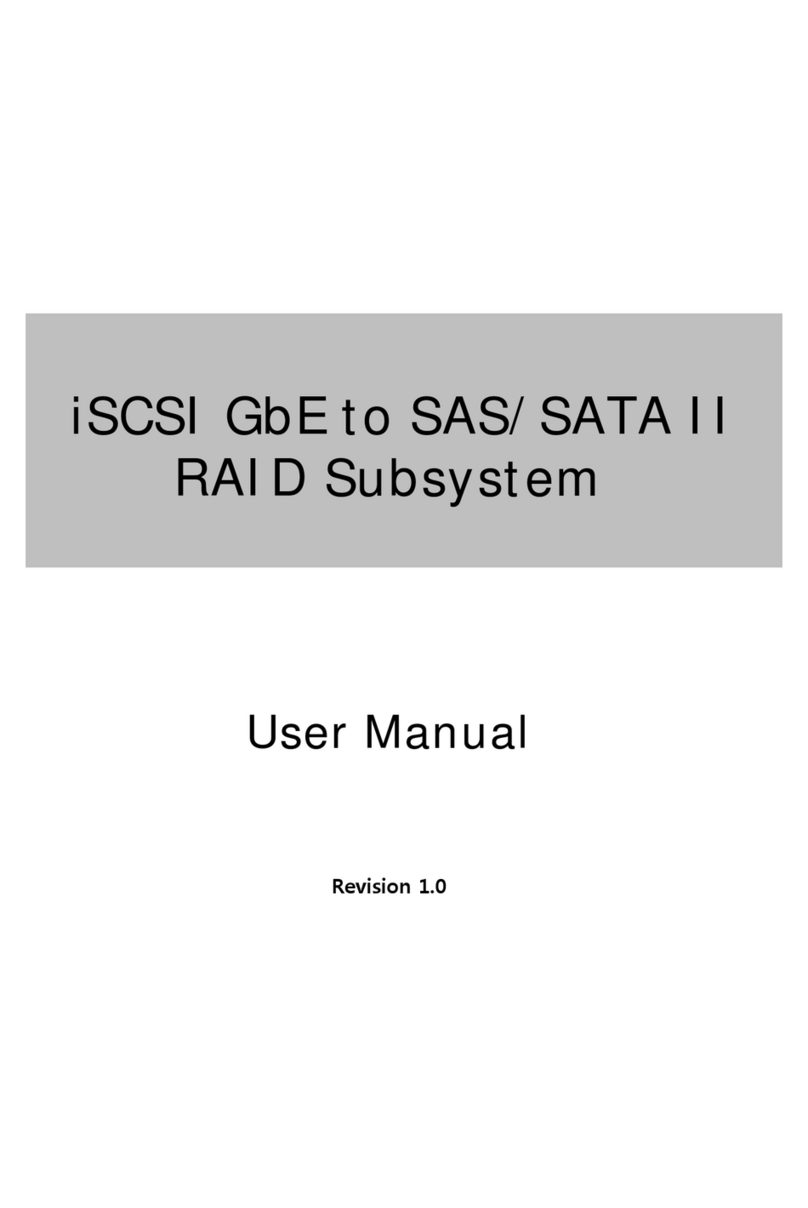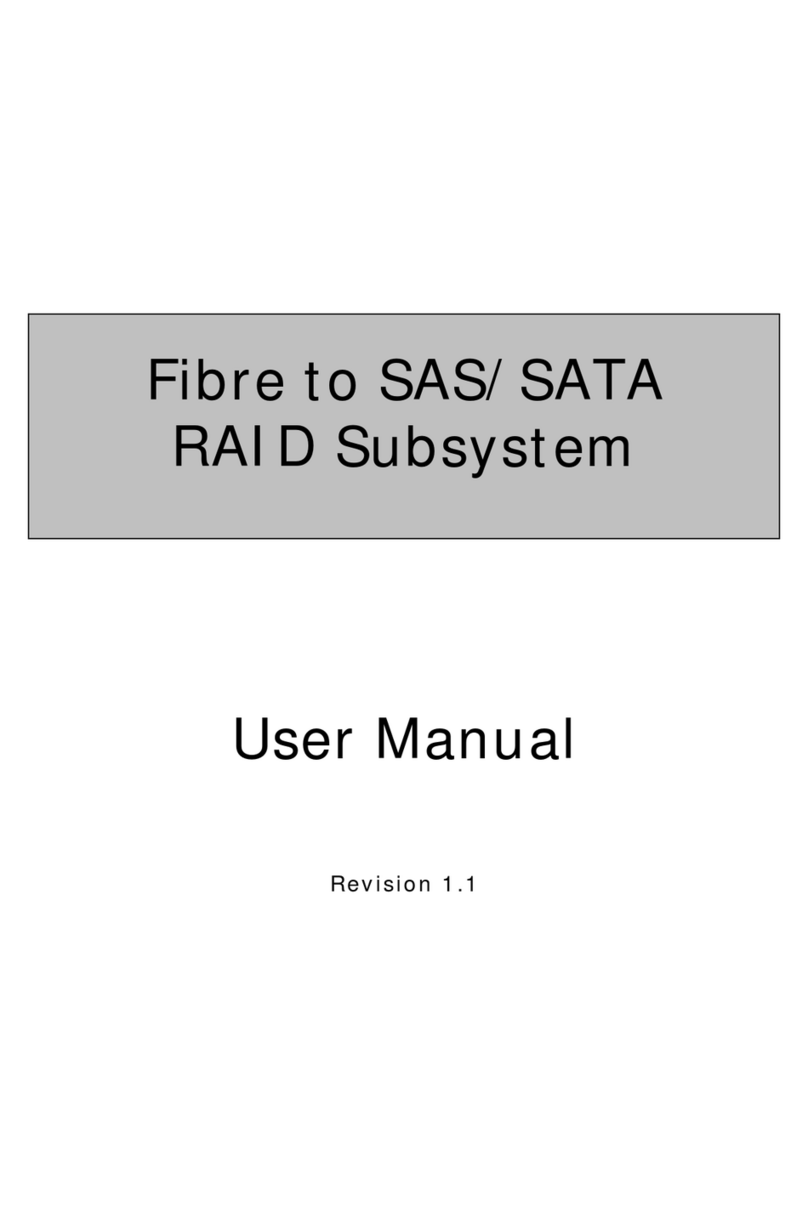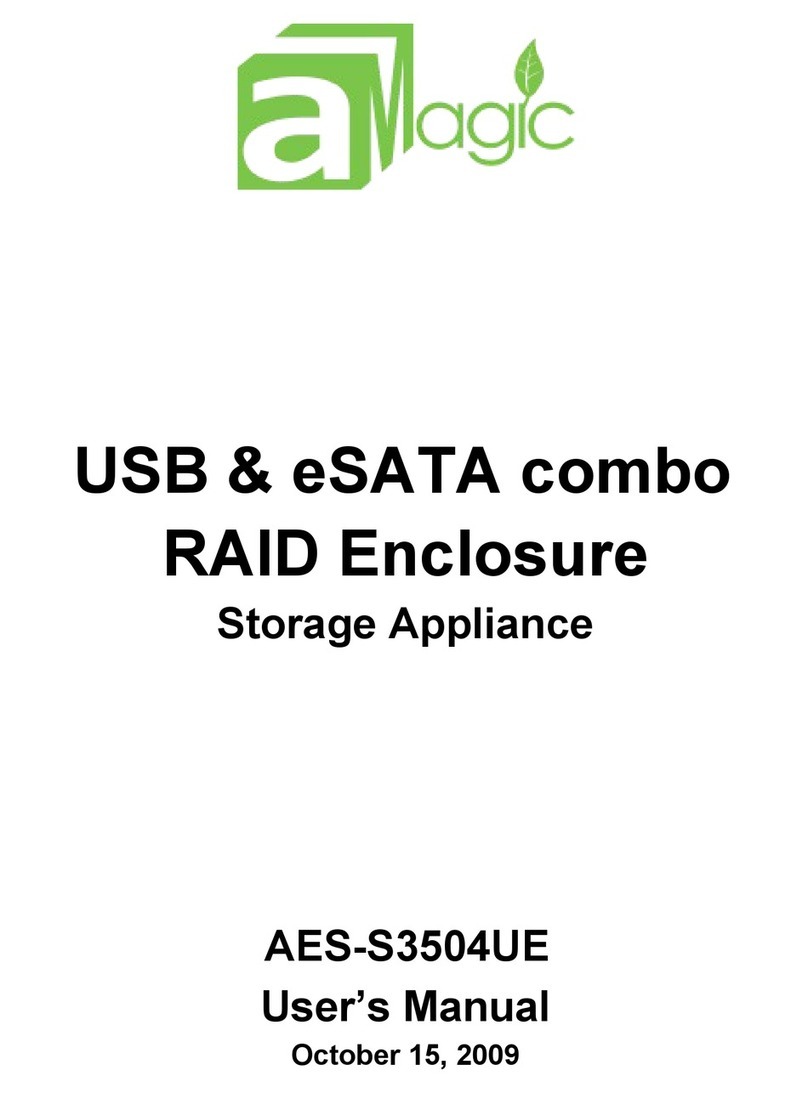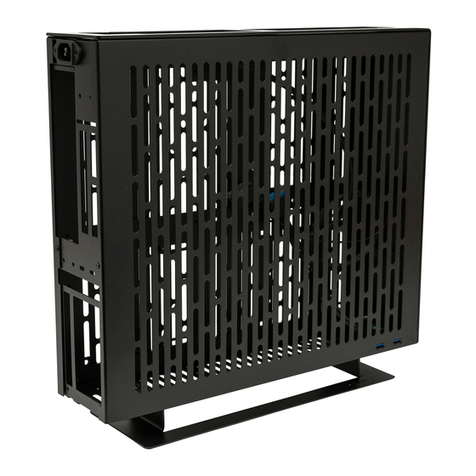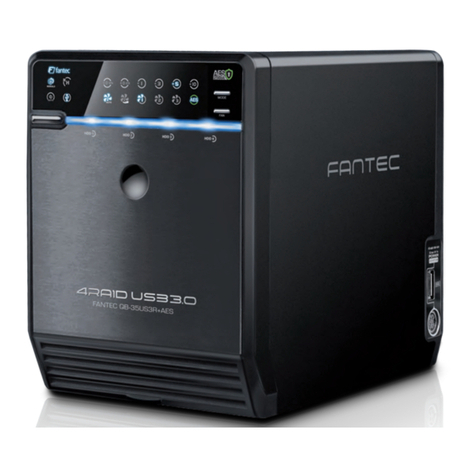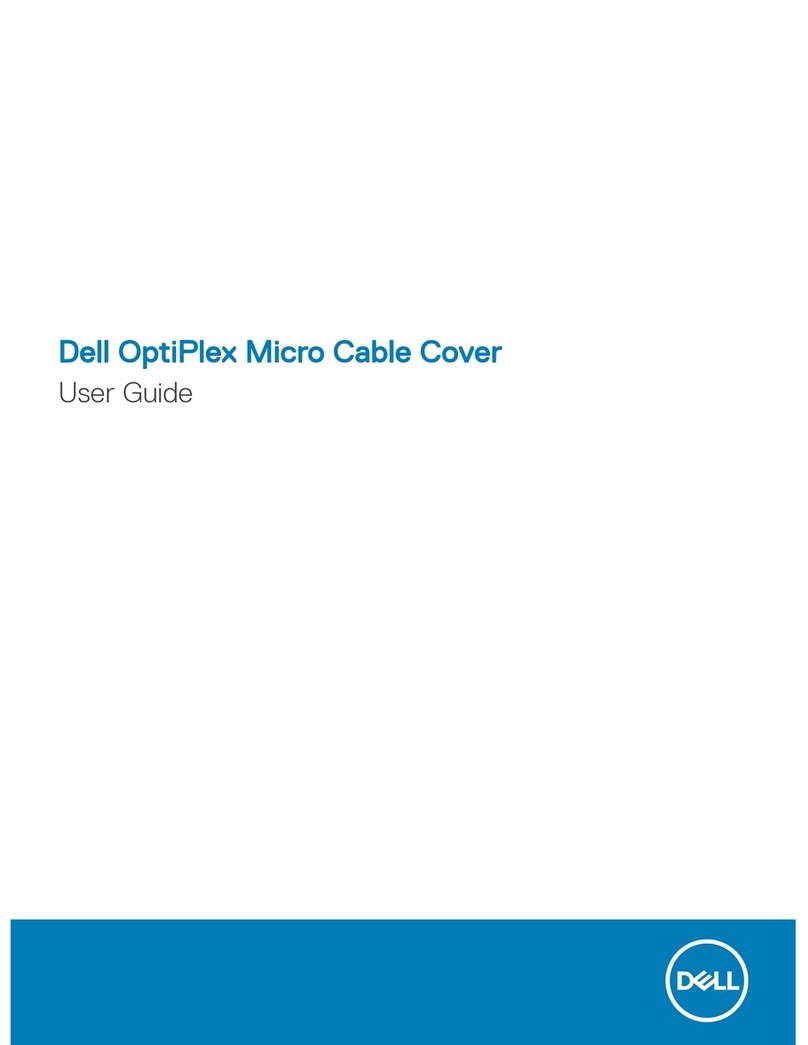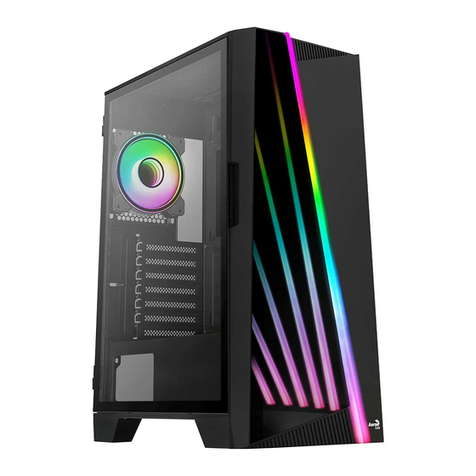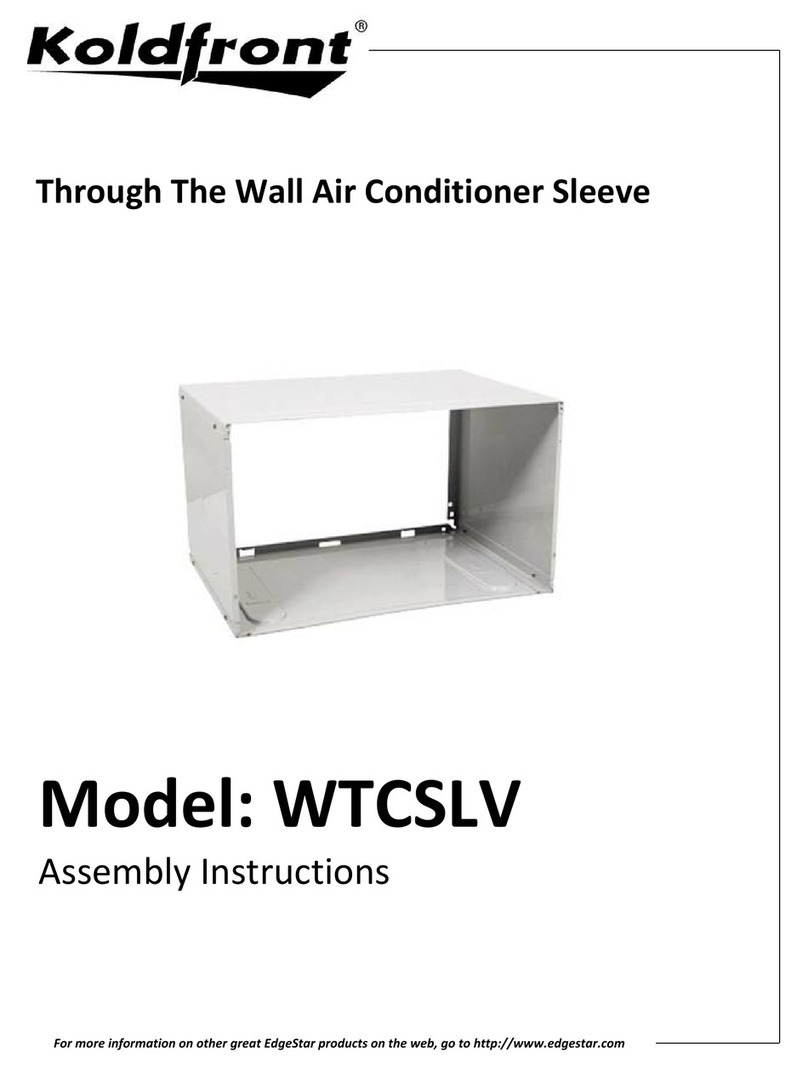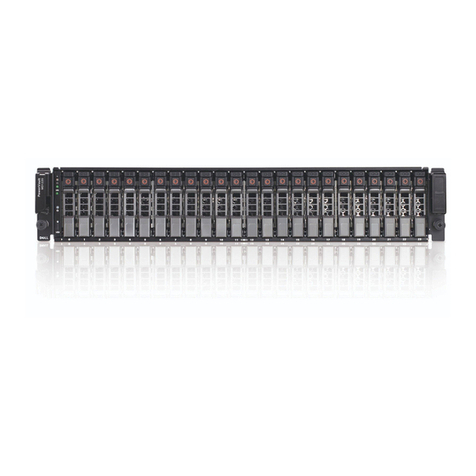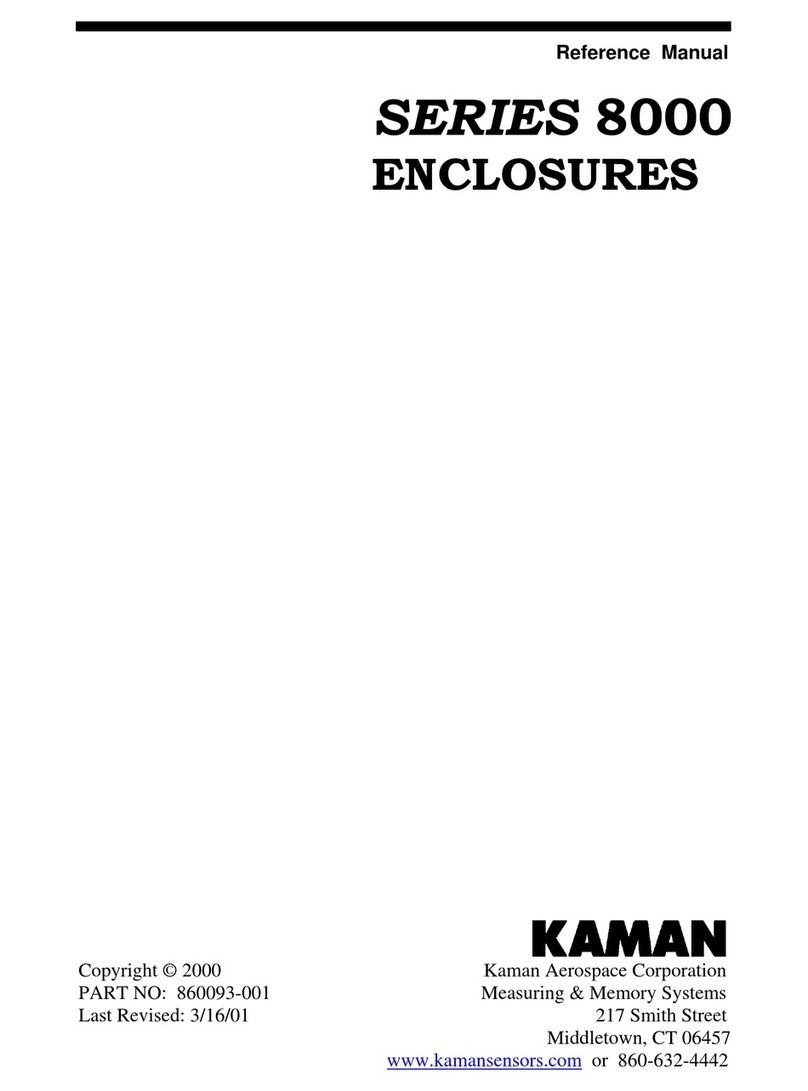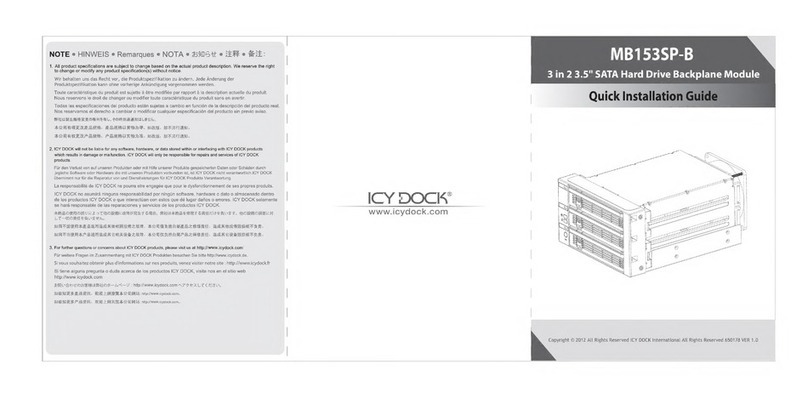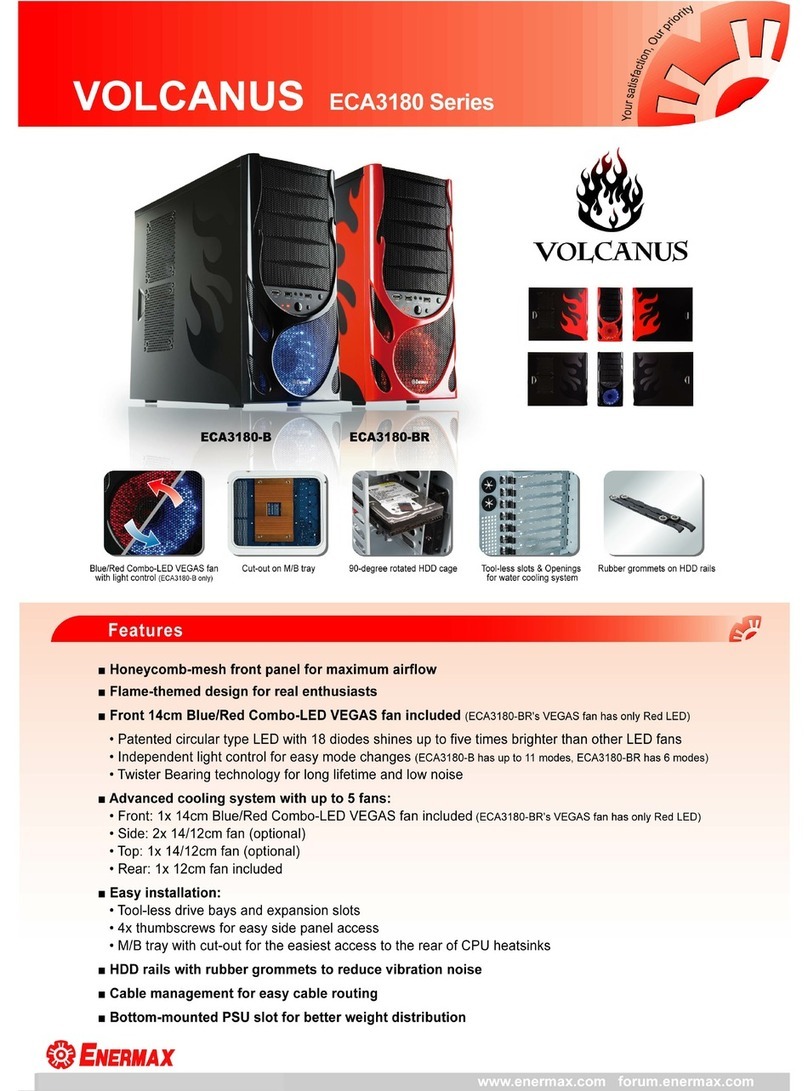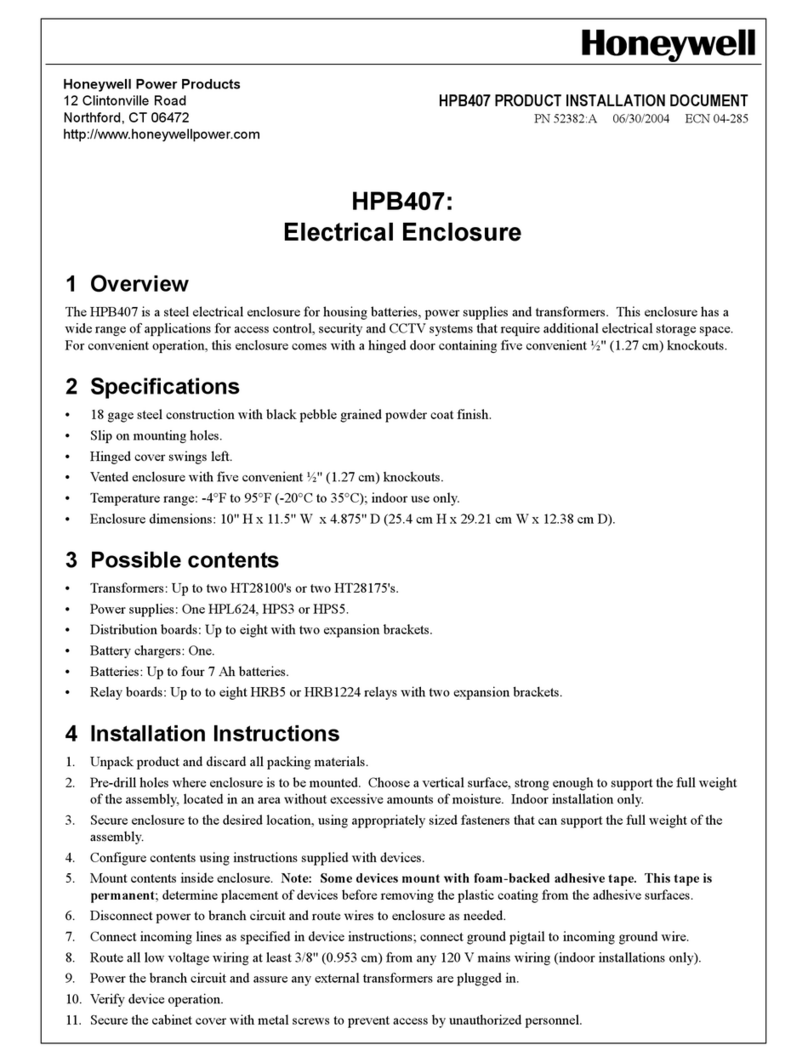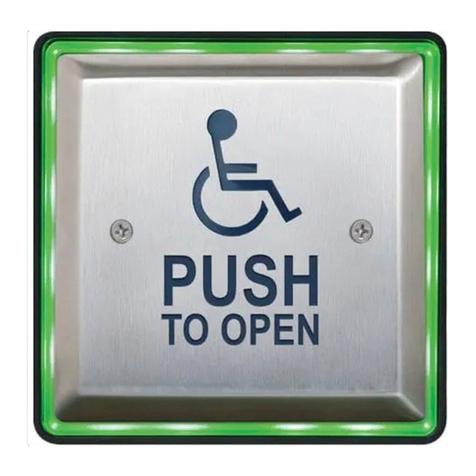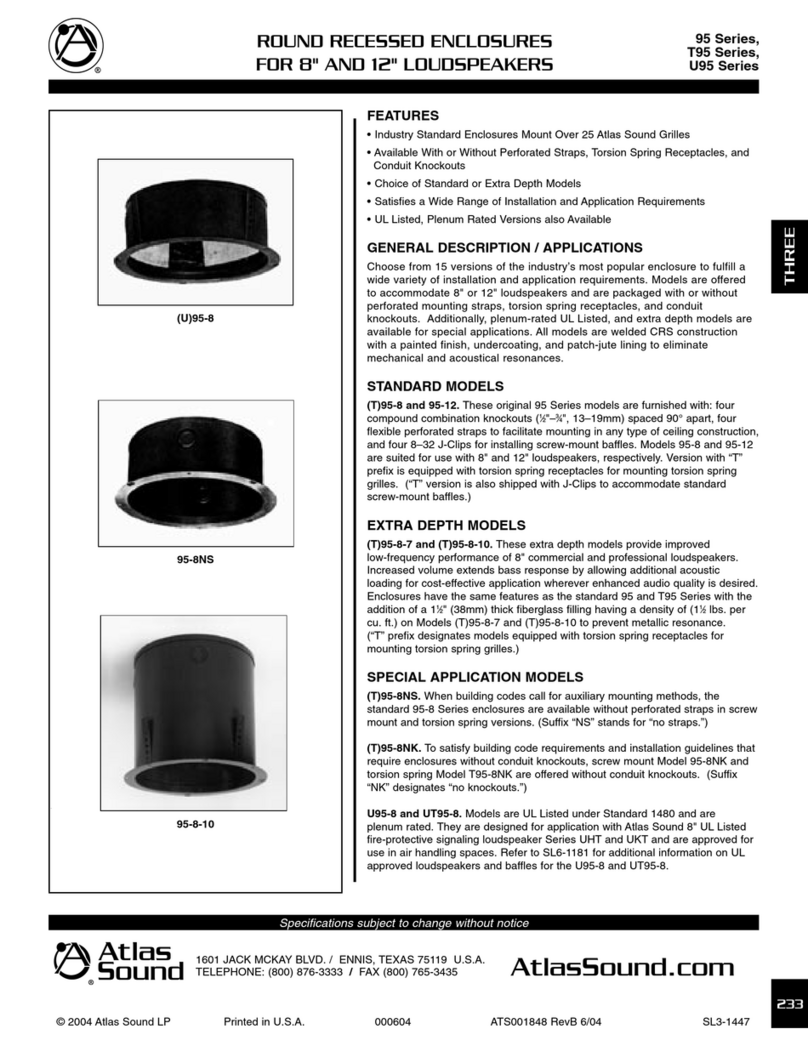Proware iSCSI-to-SATA II RAID Subsystem User manual

iSCSI-to-SATA II
RAID Subsystem
User Manual
Revision 1.0
P/N: PW0020000000374

iSCSI-to-SATA II RAID Subsystem
2 User Manual
Table of Contents
Chapter 1 Introduction........................................................................................... 4
1.1 Key Features........................................................................................................................................................5
1.2 Technical Specifications..................................................................................................................................6
1.3 Terminology ........................................................................................................................................................7
1.4 RAID Concepts ...................................................................................................................................................9
1.5 Volume Relationship Diagram.................................................................................................................. 14
Chapter 2 Getting Started ...................................................................................15
2.1 Packaging, Shipment and Delivery ......................................................................................................... 15
2.2 Unpacking the Subsystem.......................................................................................................................... 15
2.3 Identifying Parts of the iSCSI RAID Subsystem................................................................................. 16
2.3.1 Front View ................................................................................................................................................ 16
2.3.2 Rear View.................................................................................................................................................. 19
2.4 Connecting the iSCSI RAID Subsystem to Your Network............................................................. 20
2.5 Powering On .................................................................................................................................................... 20
2.6 Installing Hard Drives ................................................................................................................................... 21
2.7 iSCSI Introduction .......................................................................................................................................... 22
2.8 Management Methods ................................................................................................................................ 24
2.8.1 Web GUI.................................................................................................................................................... 24
2.8.2 Serial Monitor Port............................................................................................................................... 25
2.8.3 Remote Control – Secure Shell ....................................................................................................... 25
2.9 Enclosure............................................................................................................................................................ 26
2.9.1 LCD Control Module (LCM) .............................................................................................................. 26
2.9.2 System Buzzer......................................................................................................................................... 29
Chapter 3 Configuration via Web GUI .............................................................30
3.1 iSCSI RAID Subsystem Web GUI Hierarchy......................................................................................... 30
3.2 Login.................................................................................................................................................................... 31
3.2.1 Language .................................................................................................................................................. 32
3.2.2 Status Indicators .................................................................................................................................... 33
3.3 Quick Install...................................................................................................................................................... 34
3.4 System Configuration................................................................................................................................... 35
3.4.1 System Setting........................................................................................................................................ 36
3.4.2 IP Address ................................................................................................................................................ 37
3.4.3 Login Setting........................................................................................................................................... 38
3.4.4 Mail Setting ............................................................................................................................................. 39
3.4.5 Notification Setting .............................................................................................................................. 40

iSCSI-to-SATA II RAID Subsystem
User Manual 3
3.5 iSCSI Config...................................................................................................................................................... 42
3.5.1 Entity Property........................................................................................................................................ 42
3.5.2 NIC............................................................................................................................................................... 43
3.5.3 Node........................................................................................................................................................... 44
3.5.4 Session....................................................................................................................................................... 45
3.5.5 CHAP Account ........................................................................................................................................ 46
3.6 Volume Configuration.................................................................................................................................. 47
3.6.1 Volume Create Wizard........................................................................................................................ 48
3.6.2 Physical Disk............................................................................................................................................ 50
3.6.3 RAID Group.............................................................................................................................................. 53
3.6.4 Virtual Disk............................................................................................................................................... 56
3.6.5 Logical Unit.............................................................................................................................................. 59
3.6.6 Example ..................................................................................................................................................... 60
3.7 Enclosure Management............................................................................................................................... 65
3.7.1 SES Configuration ................................................................................................................................. 66
3.7.2 Hardware Monitor................................................................................................................................. 67
3.7.3 Hard Drive S.M.A.R.T. Function........................................................................................................ 68
3.7.4 UPS.............................................................................................................................................................. 69
3.8 System Maintenance..................................................................................................................................... 70
3.8.1 System Information .............................................................................................................................. 70
3.8.2 Upgrade .................................................................................................................................................... 71
3.8.3 Reset to Default..................................................................................................................................... 71
3.8.4 Config Import & Export...................................................................................................................... 72
3.8.5 Event Log.................................................................................................................................................. 73
3.8.6 Reboot and Shutdown........................................................................................................................ 74
3.9 Logout................................................................................................................................................................. 74
Chapter 4 Advanced Operation..........................................................................75
4.1 Rebuild................................................................................................................................................................ 75
4.2 RG Migration.................................................................................................................................................... 77
4.3 VD Extension.................................................................................................................................................... 79
4.5 Disk Roaming................................................................................................................................................... 80
4.6 Support Microsoft MPIO and MC/S....................................................................................................... 80
Appendix .....................................................................................................................81
A. Certification List ................................................................................................................................................ 81
B. Event Notifications........................................................................................................................................... 84
C. Known Issues...................................................................................................................................................... 88
D. Microsoft iSCSI Initiator ................................................................................................................................ 89
E. Installation Steps for Large Volume (Over 2TB) .................................................................................. 93
F. MPIO and MC/S Setup Instructions.......................................................................................................... 97

iSCSI-to-SATA II RAID Subsystem
4 User Manual
Chapter 1 Introduction
The iSCSI RAID Subsystem
The iSCSI RAID subsystem is a 5-bay disk array based on hardware RAID
configuration. It is an easy-to-use storage system. It is a very cost-effective disk array
subsystem with completely integrated high-performance and data-protection
capabilities which meet or exceed the highest industry standards, and the best data
solution for small or medium business users.
Unparalleled Performance
¾Front-end 2 x 1Gb full iSCSI offload
¾System architecture provides high data bandwidth with powerful 64-bit RISC
RAID processor
Unsurpassed Data Availability
¾RAID 6 capability provides the highest level of data protection
Exceptional Manageability, Menu-Driven Front Panel Display
¾Management GUI via serial console, SSH, telnet and web
¾Event notification via Email and SNMP trap
¾Menu-driven LCD front panel display to monitor environmental devices

iSCSI-to-SATA II RAID Subsystem
User Manual 5
1.1 Key Features
¾Front-end 2 x 1Gigabit ports full iSCSI offload
¾Supports iSCSI jumbo frame
¾Supports RAID levels 0, 1, 0+1, 3, 5, 6, 10 and JBOD
¾Global hot spare disks
¾Write-through or write-back cache policy for different application usage
¾Supports greater than 2TB per Virtual Disk (LUN)
¾RAID level migration
¾Online volume expansion
¾Configurable RAID stripe size
¾Instant RAID volume availability and background initialization
¾Volume rebuilding priority adjustment
¾Auto volume rebuilding
¾Array roaming

iSCSI-to-SATA II RAID Subsystem
6 User Manual
1.2 Technical Specifications
Form Factor:
Small Desktop Tower
RAID processor:
Intel XScale IOP331 500MHz Instant RAID volume availability and
background initialization support
RAID Level:
0, 1, 0+1, 3, 5, 6, 10 and JBOD Supports over 2TB per volume
Cache memory:
512MB ~ 1GB DDR333 DIMM supported Online consistency check
No. of channels (host and drives):
2 and 5 Bad block auto-remapping
Host bus interface:
1Gb/s Ethernet S.M.A.R.T. support
Drive bus interface:
3Gb/s SATA II New disk insertion / removal detection
Hot-swap drive trays:
Five (5) 1-inch trays Auto volume rebuild
Host access control:
Read-Write & Read-Only Array roaming
Supports CHAP authentication Audible alarm
Jumbo frame support Password protection
Global hot spare disks UPS connection
Maximum logical volume: up to 255 Power supplies: 270W power supply
w/PFC
Maximum host connection:up to 32 Cooling fans:1
Maximum host clustering:
up to 8 for one logical volume
Power requirements:
AC 90V ~ 264V full range
7A ~ 4A, 50Hz ~ 60Hz
Online Volume migration Environmental Relative Humidity:
10% ~ 85% Non-condensing
Online Volume expansion Operating Temp:
10oC ~ 40oC (50oF ~ 104oF)
Configurable stripe size Physical Dimensions:
264(H) x 199(W) x 338(D)mm

iSCSI-to-SATA II RAID Subsystem
User Manual 7
1.3 Terminology
The document uses the following terms:
RAID RAID is the abbreviation of “Redundant Array of Independent
Disks”. There are different RAID levels with different degree of the
data protection, data availability, and performance to host
environment.
PD The Physical Disk belongs to the member disk of one specific RAID
group.
RG Raid Group. A collection of removable media. One RG consists of a
set of VDs and owns one RAID level attribute.
VD
Virtual Disk. Each RD could be divided into several VDs. The VDs
from one RG have the same RAID level, but may have different
volume capacity.
LUN Logical Unit Number. A logical unit number (LUN) is a unique
identifier which enables it to differentiate among separate devices
(each one is a logical unit).
GUI Graphic User Interface.
RAID
width,
RAID
copy,
RAID row
(RAID cell
in one row)
RAID width, copy and row are used to describe one RG.
E.g.:
1. One 4-disk RAID 0 volume: RAID width= 4; RAID copy=1;
RAID row=1.
2. One 3-way mirroring volume: RAID width=1; RAID
copy=3; RAID row=1.
3. One RAID 10 volume over 3 4-disk RAID 1 volume: RAID
width=1; RAID copy=4; RAID row=3.
WT Write-Through cache-write policy. A caching technique in which the
completion of a write request is not signaled until data is safely
stored in non-volatile media. Each data is synchronized in both data
cache and accessed physical disks.
WB Write-Back cache-write policy. A caching technique in which the
completion of a write request is signaled as soon as the data is in
cache and actual writing to non-volatile media occurs at a later time.
It speeds up system write performance but needs to bear the risk
where data may be inconsistent between data cache and the
physical disks in one short time interval.
RO Set the volume to be Read-Only.
DS Dedicated Spare disks. The spare disks are only used by one specific
RG. Others could not use these dedicated spare disks for any
rebuilding purpose.

iSCSI-to-SATA II RAID Subsystem
8 User Manual
GS
Global Spare disks. GS is shared for rebuilding purpose. If some RGs
need to use the global spare disks for rebuilding, they could get the
spare disks out from the common spare disks pool for such
requirement.
DG DeGraded mode. Not all of the array’s member disks are
functioning, but the array is able to respond to application read and
write requests to its virtual disks.
SCSI Small Computer Systems Interface.
iSCSI Internet Small Computer Systems Interface.
FC Fibre Channel.
S.M.A.R.T. Self-Monitoring Analysis and Reporting Technology.
WWN World Wide Name.
HBA Host Bus Adapter.
SAF-TE SCSI Accessed Fault-Tolerant Enclosures.
SES SCSI Enclosure Services.
NIC Network Interface Card.
MPIO Multi-Path Input/Output.
MC/S Multiple Connections per Session
MTU Maximum Transmission Unit.
CHAP Challenge Handshake Authentication Protocol. An optional security
mechanism to control access to an iSCSI storage system over the
iSCSI data ports.
iSNS Internet Storage Name Service.

iSCSI-to-SATA II RAID Subsystem
User Manual 9
1.4 RAID Concepts
RAID Fundamentals
The basic idea of RAID (Redundant Array of Independent Disks) is to combine multiple
inexpensive disk drives into an array of disk drives to obtain performance, capacity
and reliability that exceeds that of a single large drive. The array of drives appears to
the host computer as a single logical drive.
Five types of array architectures, RAID 1 through RAID 5, were originally defined;
each provides disk fault-tolerance with different compromises in features and
performance. In addition to these five redundant array architectures, it has become
popular to refer to a non-redundant array of disk drives as a RAID 0 arrays.
Disk Striping
Fundamental to RAID technology is striping. This is a method of combining multiple
drives into one logical storage unit. Striping partitions the storage space of each drive
into stripes, which can be as small as one sector (512 bytes) or as large as several
megabytes. These stripes are then interleaved in a rotating sequence, so that the
combined space is composed alternately of stripes from each drive. The specific type
of operating environment determines whether large or small stripes should be used.
Most operating systems today support concurrent disk I/O operations across multiple
drives. However, in order to maximize throughput for the disk subsystem, the I/O load
must be balanced across all the drives so that each drive can be kept busy as much as
possible. In a multiple drive system without striping, the disk I/O load is never
perfectly balanced. Some drives will contain data files that are frequently accessed
and some drives will rarely be accessed.
By striping the drives in the array with stripes large enough so that each record falls
entirely within one stripe, most records can be evenly distributed across all drives.
This keeps all drives in the array busy during heavy load situations. This situation
allows all drives to work concurrently on different I/O operations, and thus maximize
the number of simultaneous I/O operations that can be performed by the array.

iSCSI-to-SATA II RAID Subsystem
10 User Manual
Definition of RAID Levels
RAID 0 is typically defined as a group of striped disk drives without parity or data
redundancy. RAID 0 arrays can be configured with large stripes for multi-user
environments or small stripes for single-user systems that access long sequential
records. RAID 0 arrays deliver the best data storage efficiency and performance of any
array type. The disadvantage is that if one drive in a RAID 0 array fails, the entire
array fails.
RAID 1, also known as disk mirroring, is simply a pair of disk drives that store
duplicate data but appear to the computer as a single drive. Although striping is not
used within a single mirrored drive pair, multiple RAID 1 arrays can be striped
together to create a single large array consisting of pairs of mirrored drives. All writes
must go to both drives of a mirrored pair so that the information on the drives is kept
identical. However, each individual drive can perform simultaneous, independent read
operations. Mirroring thus doubles the read performance of a single non-mirrored
drive and while the write performance is unchanged. RAID 1 delivers the best
performance of any redundant array type. In addition, there is less performance
degradation during drive failure than in RAID 5 arrays.

iSCSI-to-SATA II RAID Subsystem
User Manual 11
RAID 3 sector-stripes data across groups of drives, but one drive in the group is
dedicated to storing parity information. RAID 3 relies on the embedded ECC in each
sector for error detection. In the case of drive failure, data recovery is accomplished
by calculating the exclusive OR (XOR) of the information recorded on the remaining
drives. Records typically span all drives, which optimizes the disk transfer rate.
Because each I/O request accesses every drive in the array, RAID 3 arrays can satisfy
only one I/O request at a time. RAID 3 delivers the best performance for single-user,
single-tasking environments with long records. Synchronized-spindle drives are
required for RAID 3 arrays in order to avoid performance degradation with short
records. RAID 5 arrays with small stripes can yield similar performance to RAID 3
arrays.
Under RAID 5 parity information is distributed across all the drives. Since there is no
dedicated parity drive, all drives contain data and read operations can be overlapped
on every drive in the array. Write operations will typically access one data drive and
one parity drive. However, because different records store their parity on different
drives, write operations can usually be overlapped.

iSCSI-to-SATA II RAID Subsystem
12 User Manual
Dual-level RAID achieves a balance between the increased data availability inherent
in RAID 1 and RAID 5 and the increased read performance inherent in disk striping
(RAID 0). These arrays are sometimes referred to as RAID 0+1 or RAID 10 and RAID
0+5 or RAID 50.
RAID 6 is similar to RAID 5 in that data protection is achieved by writing parity
information to the physical drives in the array. With RAID 6, however, two sets of
parity data are used. These two sets are different, and each set occupies a capacity
equivalent to that of one of the constituent drives. The main advantage of RAID 6 is
High data availability – any two drives can fail without loss of critical data.
In summary:
RAID 0 is the fastest and most efficient array type but offers no fault-tolerance.
RAID 0 requires a minimum of one drive.
RAID 1 is the best choice for performance-critical, fault-tolerant environments.
RAID 1 is the only choice for fault-tolerance if no more than two drives are used.
RAID 3 can be used to speed up data transfer and provide fault-tolerance in single-
user environments that access long sequential records. However, RAID 3 does not
allow overlapping of multiple I/O operations and requires synchronized-spindle
drives to avoid performance degradation with short records. RAID 5 with a small
stripe size offers similar performance.
RAID 5 combines efficient, fault-tolerant data storage with good performance
characteristics. However, write performance and performance during drive failure
is slower than with RAID 1. Rebuild operations also require more time than with
RAID 1 because parity information is also reconstructed. At least three drives are
required for RAID 5 arrays.
RAID 6 is essentially an extension of RAID level 5 which allows for additional fault
tolerance by using a second independent distributed parity scheme (two-
dimensional parity). Data is striped on a block level across a set of drives, just like
in RAID 5, and a second set of parity is calculated and written across all the drives;
RAID 6 provides for an extremely high data fault tolerance and can sustain
multiple simultaneous drive failures. It is a perfect solution for mission critical
applications.

iSCSI-to-SATA II RAID Subsystem
User Manual 13
RAID Management
The subsystem can implement several different levels of RAID technology. RAID levels
supported by the subsystem are shown below.
RAID Level Description Min. Drives
0 Block striping is provide, which yields
higher performance than with individual
drives. There is no redundancy. 1
1 Drives are paired and mirrored. All data is
100% duplicated on an equivalent drive.
Fully redundant. 2
N-way
mirror Extension of RAID 1 level. It has N copies of
the disk. N
3 Data is striped across several physical
drives. Parity protection is used for data
redundancy. 3
5 Data is striped across several physical
drives. Parity protection is used for data
redundancy. 3
6
Data is striped across several physical
drives. Parity protection is used for data
redundancy. Requires N+2 drives to
implement because of two-dimensional
parity scheme
4
0 + 1 Mirroring of the two RAID 0 disk arrays.
This level provides striping and redundancy
through mirroring. 4
10 Striping over the two RAID 1 disk arrays.
This level provides mirroring and
redundancy through striping. 4
JBOD The abbreviation of “Just a Bunch Of Disks”.
JBOD needs at least one hard drive. 1

iSCSI-to-SATA II RAID Subsystem
14 User Manual
1.5 Volume Relationship Diagram
This diagram shows how the volume structure of the iSCSI RAID subsystem is
designed. It describes the relationship of RAID components. One RG (RAID group)
consists of a set of VDs (Virtual disk) and owns one RAID level attribute. Each RG can
be divided into several VDs. The VDs in one RG share the same RAID level, but may
have different volume capacity. Each VD will be associated with the Volume Cache
(portion of cache memory) to execute the data transaction. LUN (Logical Unit Number)
is a unique identifier assigned to every VD, and users access the LUN through SCSI
commands.
RG
PD 2 PD 3 DSPD 1
VD 1 VD 2 VD 3
RAM (cache memory)
Volume
Cache System
Cache
+
LUN 1
LUN 2
LUN 3
++

iSCSI-to-SATA II RAID Subsystem
User Manual 15
Chapter 2 Getting Started
2.1 Packaging, Shipment and Delivery
Before removing the subsystem from the shipping carton, you should visually
inspect the physical condition of the shipping carton.
Unpack and verify that the contents of the shipping carton are complete and in
good condition.
Exterior damage to the shipping carton may indicate that the contents of the
carton are damaged.
If any damage is found, do not remove the components; contact the dealer
where you purchased the subsystem for further instructions.
2.2 Unpacking the Subsystem
The package contains the following items:
• iSCSI RAID subsystem unit
• One power cord
• Three Ethernet LAN cables
• One RS232 null modem cable (phone jack to DB9)
• One UPS cable (phone jack to DB9)
• Installation Reference Guide
• Spare screws, etc.
If any of these items are missing or damaged, please contact your dealer or sales
representative for assistance.

iSCSI-to-SATA II RAID Subsystem
16 User Manual
2.3 Identifying Parts of the iSCSI RAID Subsystem
The illustrations below identify the various parts of the subsystem.
2.3.1 Front View

iSCSI-to-SATA II RAID Subsystem
User Manual 17
Power On/Off Switch
Use this to power on or power off the subsystem.
Carrier Open Button
Use this to open the disk tray. Press the button to open. This button also
shows the Lock Indicator.
When the Lock Groove is vertical, this indicates that the Drive Tray is
locked. When the Lock Groove is horizontal, the Drive Tray is unlocked. Lock
and unlock the Drive Trays by using a flat-head screw driver.
Tray Lever – Use this to pull out the disk tray.
HDD Status Indicator
Every Drive Tray contains two LEDs for displaying the HDD status.
Parts Function
HDD Status LED Green LED indicates power is on and hard drive
status is good for this slot. Red LED indicates no
hard drive.
HDD Access LED LED will blink blue when the hard drive is busy or
is being accessed.
LCD Front Panel
The LCD Front Panel has a front cover. Open the front cover to access the LCD
Front Panel.

iSCSI-to-SATA II RAID Subsystem
18 User Manual
Power LED
Green LED indicates power is on.
Busy LED
This LED will be blinking Green when the RAID subsystem is busy or data is
being accessed.
Status LED
This LED will become Orange (amber) when there is abnormal condition in the
RAID subsystem, such as when a RAID is degraded or failed.
LCD Display
This displays the current IP address and the model name or the iSCSI RAID
subsystem.
LCD Control Module (LCM)
Use the function keys to navigate through the menu options available in the
LCM.
Parts Function
Up and Down
buttons
Use the Up or Down buttons to go
through the information on the LCD
screen. This is also used to move
between each menu when you
configure the subsystem.
Enter button ENT This is used to enter the option you
have selected.
Escape button ESC Press this button to return to the
previous menu.

iSCSI-to-SATA II RAID Subsystem
User Manual 19
2.3.2 Rear View
Uninterruptible Power Supply (UPS) Port (APC Smart UPS only)
The subsystem has an optional UPS port allowing you to connect an APC Smart
UPS device. Connect the UPS cable from the UPS device to the UPS port
located at the rear of the subsystem. This will automatically allow the
subsystem to use the functions and features of the UPS.
Monitor Port
The subsystem is equipped with an RS232 serial port allowing you to connect a
PC or terminal using the null modem cable (phone-jack to DB9).
R-Link Port: Remote Link through RJ-45 Ethernet for remote management
The subsystem is equipped with one 10/100 Ethernet RJ45 LAN port. Use web
browser to remotely manage, monitor or configure the RAID subsystem.
LAN1 / LAN2 Ports
The subsystem is equipped with two 1Gigabit data ports for connecting to the
network.
Fan
One cooling fan is located at the rear of the subsystem. It provides sufficient
airflow and heat dispersion inside the chassis. In case a fan fails to function,
the Status LED will turn red and an alarm will sound.

iSCSI-to-SATA II RAID Subsystem
20 User Manual
2.4 Connecting the iSCSI RAID Subsystem to Your Network
To connect the iSCSI unit to the network, insert the cable that came with the unit
into the Gigabit network port (LAN1) on the back of iSCSI unit. Insert the other
end into a Gigabit BASE-T Ethernet connection on your network hub or switch. You
may connect the other network port LAN2 if needed.
For remote management of the iSCSI RAID subsystem, connect the R-Link port to
your network.
2.5 Powering On
1. Plug in the power cord into the AC Power Input Socket located at the rear of
the subsystem.
2. Press the Power On/Off Switch.
3. The Power LED on the front Panel will turn green.
Table of contents
Other Proware Enclosure manuals
